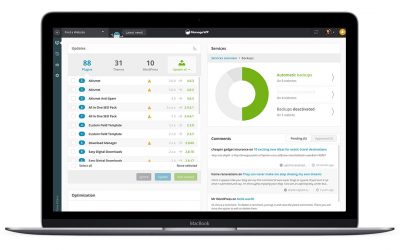WordPress, being a versatile and user-friendly content management system, offers powerful tools for creating and managing both pages and posts. Understanding the differences between pages and posts and how to effectively utilize them is essential for building a successful website. In this blog, we’ll guide you through the process of creating pages and posts in WordPress.
Creating Pages: Pages in WordPress are static and typically serve as core content on your website. Follow these steps to create a page:
- Log in to your WordPress dashboard.
- Navigate to the “Pages” section on the left sidebar.
- Click on “Add New” to create a new page.
- Enter a title for your page in the designated field.
- Utilize the visual editor to add and format your content. You can insert text, images, videos, and other media elements.
- Use the formatting options to customize your content, such as headings, lists, and alignments.
- Once you’re satisfied with your page, click on “Publish” to make it live on your website.
Remember, you can create parent and child pages to organize your content hierarchically. Additionally, you can customize the page attributes such as templates and featured images in the right-hand sidebar.
Creating Posts: Posts in WordPress are dynamic and typically represent blog entries or time-sensitive content. Follow these steps to create a post:
- Log in to your WordPress dashboard.
- Navigate to the “Posts” section on the left sidebar.
- Click on “Add New” to create a new post.
- Enter a title for your post in the designated field.
- Use the visual editor to write your post content, just like with pages.
- Add relevant tags and assign categories to organize your posts.
- Choose a featured image that represents your post effectively.
- Once you’re ready, click on “Publish” to make your post live on your website.
WordPress also provides the option to schedule posts for future publication, making it convenient for planning and consistency in your content strategy. You can access this feature in the “Publish” settings.
Understanding the Differences: While both pages and posts allow you to create content, it’s important to grasp their distinctions:
- Pages: Ideal for creating static, evergreen content like About Us, Contact, or Services pages. Pages are not typically displayed in a chronological order and are often added to your site’s navigation menu.
- Posts: Best suited for dynamic content, news updates, or blog entries. Posts are displayed in reverse chronological order, allowing visitors to easily find and engage with your latest content. They can be categorized and tagged for better organization and navigation.
Conclusion: Creating pages and posts in WordPress is a straightforward process that enables you to build a comprehensive and engaging website. By understanding the differences between pages and posts and utilizing their unique features, you can effectively present your content to your audience. Whether you’re sharing timeless information or publishing timely blog posts, WordPress provides the flexibility and tools to bring your ideas to life.




Recent Comments